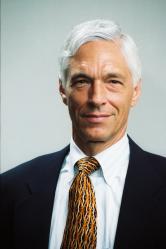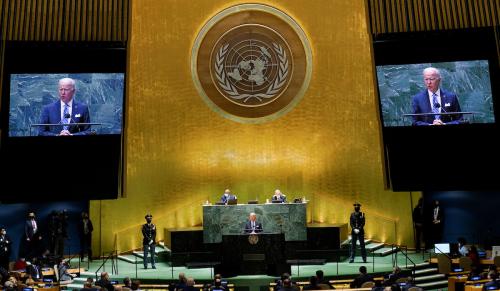Introduction: Overseas Service as a Soft Instrument of Power
The United States is struggling to define a new role for itself in the post-Cold War world that protects its vital self interests without making the rest of the world uncomfortable.
In retrospect, the decade of the 1990s was a cakewalk. Together with its Cold War allies Americans focused on helping the transition countries in Eastern and Central Europe and the former Soviet Union build functioning democratic political systems and growing market economies. The USA met this immense challenge successfully, by and large, and it gained friends in the process.
By contrast, the first five years of the new millennium have been mostly downhill for the USA. The terrorist attacks on 9/11/01 changed the national mood in a matter of hours from gloating to a level of fear unknown since the Depression of the 1930s. They also pushed sympathy for the USA among people in the rest of the world to new heights. However, the feeling of global solidarity quickly dissipated after the military intervention in Iraq by a narrow US-led coalition. A major poll measuring the attitudes of foreigners toward the USA found a sharp shift in opinion in the negative direction between 2002 and 2003, which has only partially recovered since then.
The devastation of New Orleans by Hurricane Katrina at the end of August 2005 was another blow to American self-confidence as well as to its image in the rest of the world. It cracked the veneer of the society reflected in the American movies and TV programs that flood the world. It exposed weaknesses in government institutions that had been promoted for decades as models for other countries.
Internal pressure to turn America’s back on the rest of the world is likely to intensify as the country focuses attention on domestic problems such as the growing number of Americans without health insurance, educational performance that is declining relative to other countries, deteriorating infrastructure, and increased dependence on foreign supplies of oil and gas. A more isolationist sentiment would reduce the ability of the USA to use its overwhelming military power to promote peaceful change in the developing countries that hold two-thirds of the world’s population and pose the gravest threats to global stability. Isolationism might heighten the sense of security in the short run, but it would put the USA at the mercy of external forces in the long run.
Accordingly, one of the great challenges for the USA today is to build a broad coalition of like-minded nations and a set of international institutions capable of maintaining order and addressing global problems such as nuclear proliferation, epidemics like HIV/AIDS and avian flu, failed states like Somalia and Myanmar, and environmental degradation. The costs of acting alone or in small coalitions are now more clearly seen to be unsustainable. The limitations of “hard” instruments of foreign policy have been amply demonstrated in Iraq. Military power can dislodge a tyrant with great efficiency but cannot build stable and prosperous nations. Appropriately, the appointment of Karen Hughes as Under Secretary of State for Public Diplomacy and Public Affairs suggests that the Bush Administration is gearing up to rely more on “soft” instruments.
The soft instruments of power can be thought of as including a vast array of public sector and private sector activities. They range from the government’s position in the international debate about global warming to the Fulbright program of academic exchanges to the behavior of American tourists overseas. For the purposes of this paper they are defined as the residual set of instruments after excluding hard instruments, with hard instruments being defined as all instruments involving any kind of armed military or police force.
The purpose of this paper is to focus on one particular soft instrument in one category of these instruments. The category is activities funded by the federal budget. The instrument is overseas service, typified by the Peace Corps. The central question addressed in this paper is whether federal government funding for overseas service is too big or too small. A preliminary answer involves an attempt to measure the “bang for the buck” in two distinct exercises. One compares the major overseas service programs supported by the US Government—the Peace Corps program—with other soft instruments, such as overseas study. The other compares the Peace Corps program with alternative overseas service programs. Both exercises are constrained by the lack of any broadly accepted methodology for comparing these kinds of apples and oranges.
Part II of this paper looks at the Peace Corps program in the context of other federally-funded soft instruments.
Part III provides some historical context on overseas service by Americans. It traces the growth of overseas service and places it in the stream of public service and national service options.
Part IV focuses on the options for overseas service that Americans have today. Using the Peace Corps as a benchmark, it examines the scale, cost, and effectiveness of the other options.
Part V examines the policy choices involved in designing a new, catalytic overseas service program loosely modeled on the domestic AmeriCorps program.
Finally, a preliminary design for such a program is presented in Part VI.



